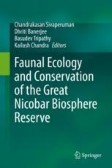Search
Search Results
-
Comparative identification of phytoplankton taxonomic and functional group approach in karst lakes using classical microscopy and eDNA metabarcoding for ecological status assessment
Phytoplankton is one of the five biological quality elements used to assess the ecological status of lakes within the Water Framework Directive....

-
Physical characteristics of northern forested lakes predict sensitivity to climate change
Evidence suggests that boreal-lake ecosystems are changing rapidly, but with variable ecological responses, due to climate warming. Paleolimnological...

-
Dreissena in large lakes: long-term population dynamics and population assessment using conventional methods and videography
Strong ecological and economic impacts of zebra and quagga mussels ( Dreissena polymorpha and D. rostriformis bugensis ) on the invaded waterbodies...

-
Ontogenetic variation in isotopic niche positions of aquatic consumers in boreal lakes
We used an extensive multispecies dataset to examine how C and N stable isotope ratios (δ 13 C and δ 15 N) of aquatic consumers varied with body size in...

-
Modeling of suitable habitats for starry stonewort (Nitellopsis obtusa) in inland lakes in the Midwest and northeast U.S.A
Nitellopsis obtusa was first documented in the St. Lawrence River in 1974 and likely spread via human-assisted activity to at-least seven states in...

-
Using Genomic Data to Guide Walleye Management in the Great Lakes
Genetic and genomic resources are being developed at a rapid pace, offering powerful tools that can help protect and sustain ecologically important...
-
Structure of Aquatic Communities in Mountain Lakes of the Torgovaya River Basin (Subpolar Ural)
AbstractThis paper is analyzes the faunistic composition and quantitative characteristics of aquatic communities in the mountain lakes of the...

-
Context dependence in community composition of functional traits mediates freshwater fish invasion success in the Laurentian Great Lakes over time
As the number of non-native species introductions continues to increase, the need for tools to predict potential invaders is a central focus in...

-
Browning-induced changes in trophic functioning of planktonic food webs in temperate and boreal lakes: insights from fatty acids
The effects of lake browning on trophic functioning of planktonic food webs are not fully understood. We studied the effects of browning on the...

-
A new trophic index (TIM2S) to evaluate trophic alteration of small shallow lakes: a predictive reference-based approach
Small shallow lakes (SSLs) have great conservation value and support numerous ecosystem services. However, these small ecosystems are faced with many...

-
Purification Efficiency of Two Ecotypes of Wetland Plants on Subtropical Eutrophic Lakes in China
The accelerated eutrophication rate of (sub)tropical lakes is a major environmental problem. Constructed wetlands are considered as an effective...

-
Soil and Plant Cover and Microbial–Biomorphic Assessment of Ecosystems in Coastal Depressions of Highly Mineralized Drainless Pulsating Lakes of Dauria (Southeastern Transbaikalia)
AbstractThe soils, vegetation cover, and microbiota of coastal depressions of highly mineralized drainless chloride lakes in southeastern...

-
Effect of rainbow trout introductions on food webs in lakes of the arid Patagonia
Rainbow trout have been stocked in naturally fishless lakes in the reproductive area of the endangered Hooded Grebe, an endemic aquatic bird of...

-
Odonata of Great Nicobar Biosphere Reserve
The odonate fauna of the Great Nicobar Island comprises of 24 species belonging to two suborders, five families and 21 genera. Three species are...
-
The non-native charophyte Nitellopsis obtusa (starry stonewort) influences shifts in macrophyte diversity and community structure in lakes across a geologically heterogeneous landscape
Nitellopsis obtusa is a non-native charophyte introduced to the Laurentian Great Lakes in the 1970s. Over the last decade, there have been increased...

-
Macroinvertebrate assemblages in acidified mountain lake inflows differs from lake outflows: the influence of lakes
This synoptic study of inflows and outflows of eight atmospherically acidified glacial lakes in the Bohemian Forest, the Czech Republic and Germany,...

-
Ecological Carrying Capacity Modeling and Sustainability Assessment of the Seven Lakes of San Pablo City, Laguna, Philippines
Aquaculture was introduced in the seven lakes in the 1960s and has significantly contributed to the income of the fishing community, while ecotourism...
-
Ecological and Morphological Characteristics and Feeding of Perch (Perca fluviatilis) in the Autumn–Winter Period in Dystrophic and Oligotrophic Lakes of Northern Karelia (Russia)
AbstractThe biological features (length–weight parameters, age structure) and diet composition of populations of river perch Perca fluviatilis L.,...

-
Abnormalities and Bilateral Asymmetry of Otoliths in Arctic Charr Salvelinus alpinus Complex (Salmonidae) from Lakes Lama and Kapchuk, Taimyr
AbstractOtolith abnormalities and bilateral asymmetry are analyzed in five reproductively isolated forms and natural F1 hybrids between the forms in...

-
Crucian carp (Carassius carassius (L.)), an anonymous fish with great skills
The crucian carp ( Carassius carassius ) is a cyprinid fish with its natural distribution in Europe and the western part of Asia. Due to its hardiness...

